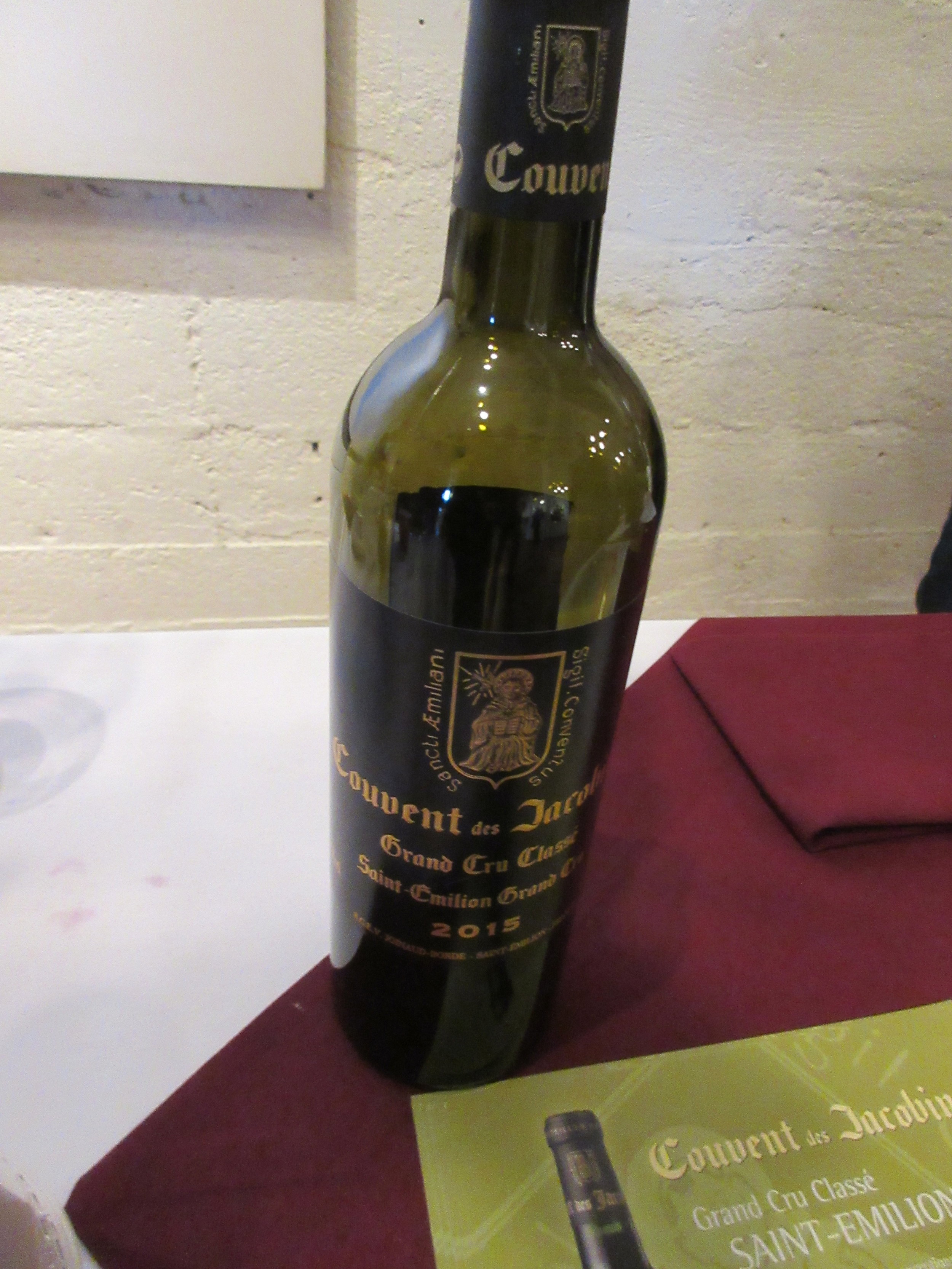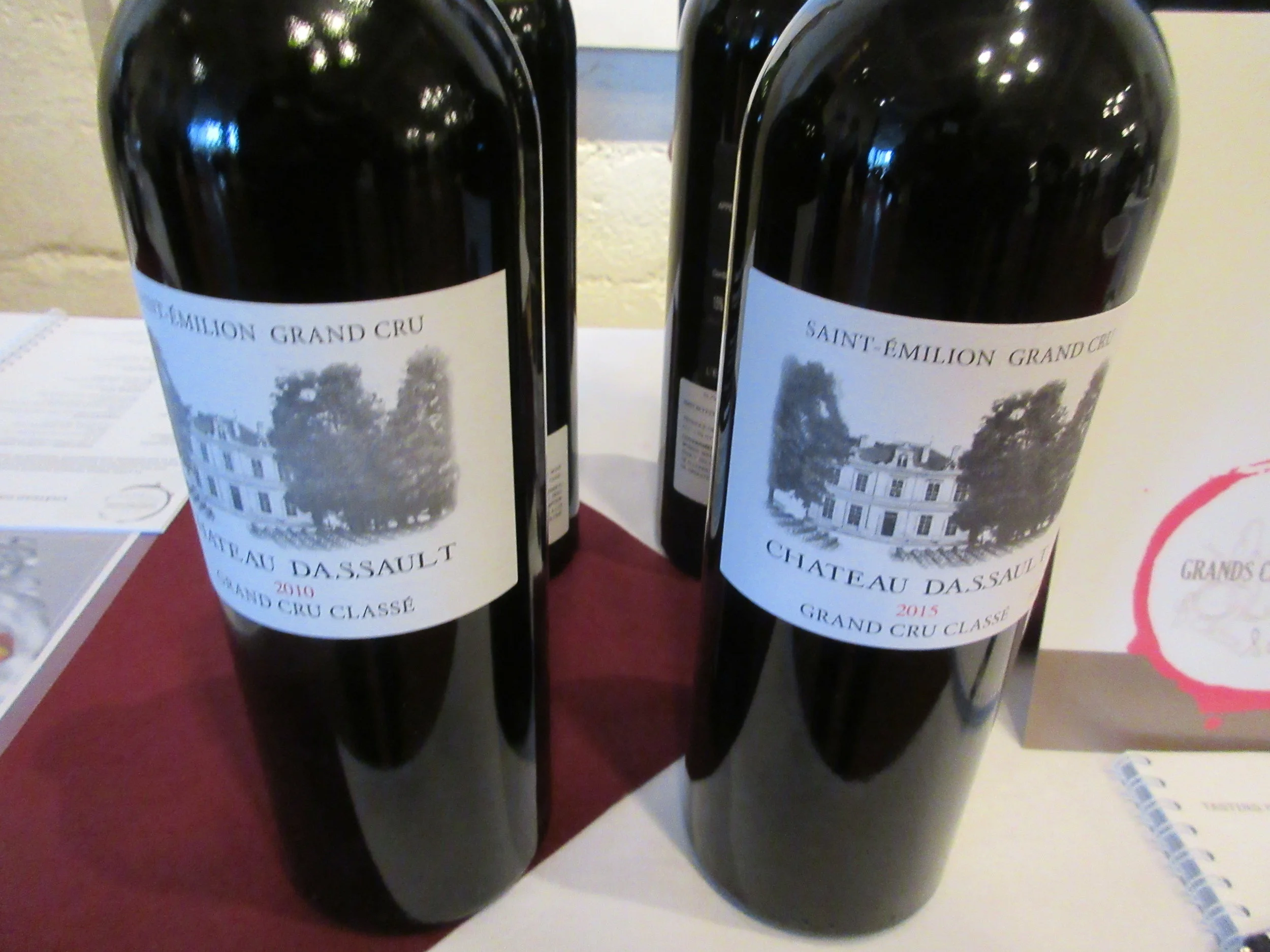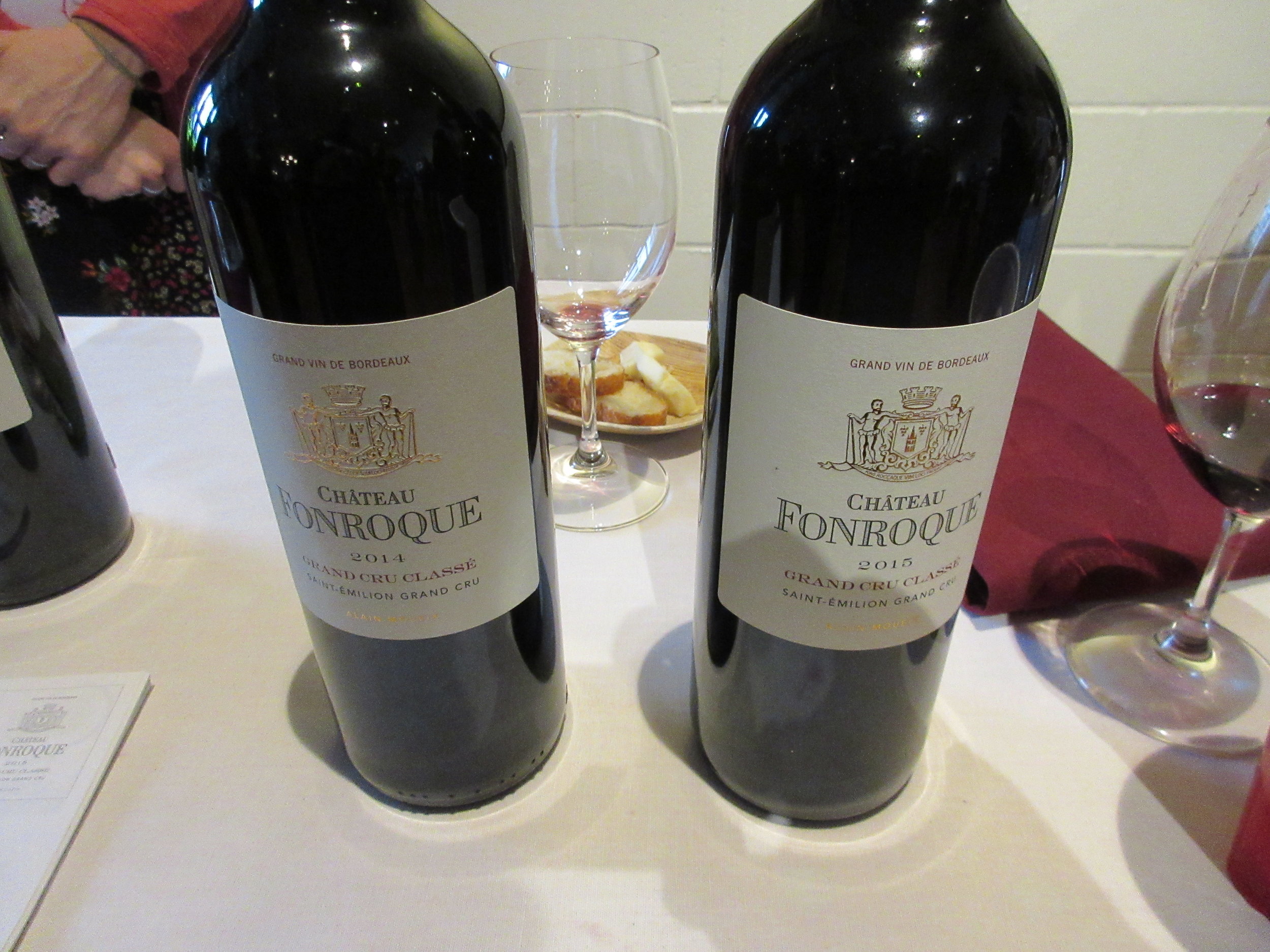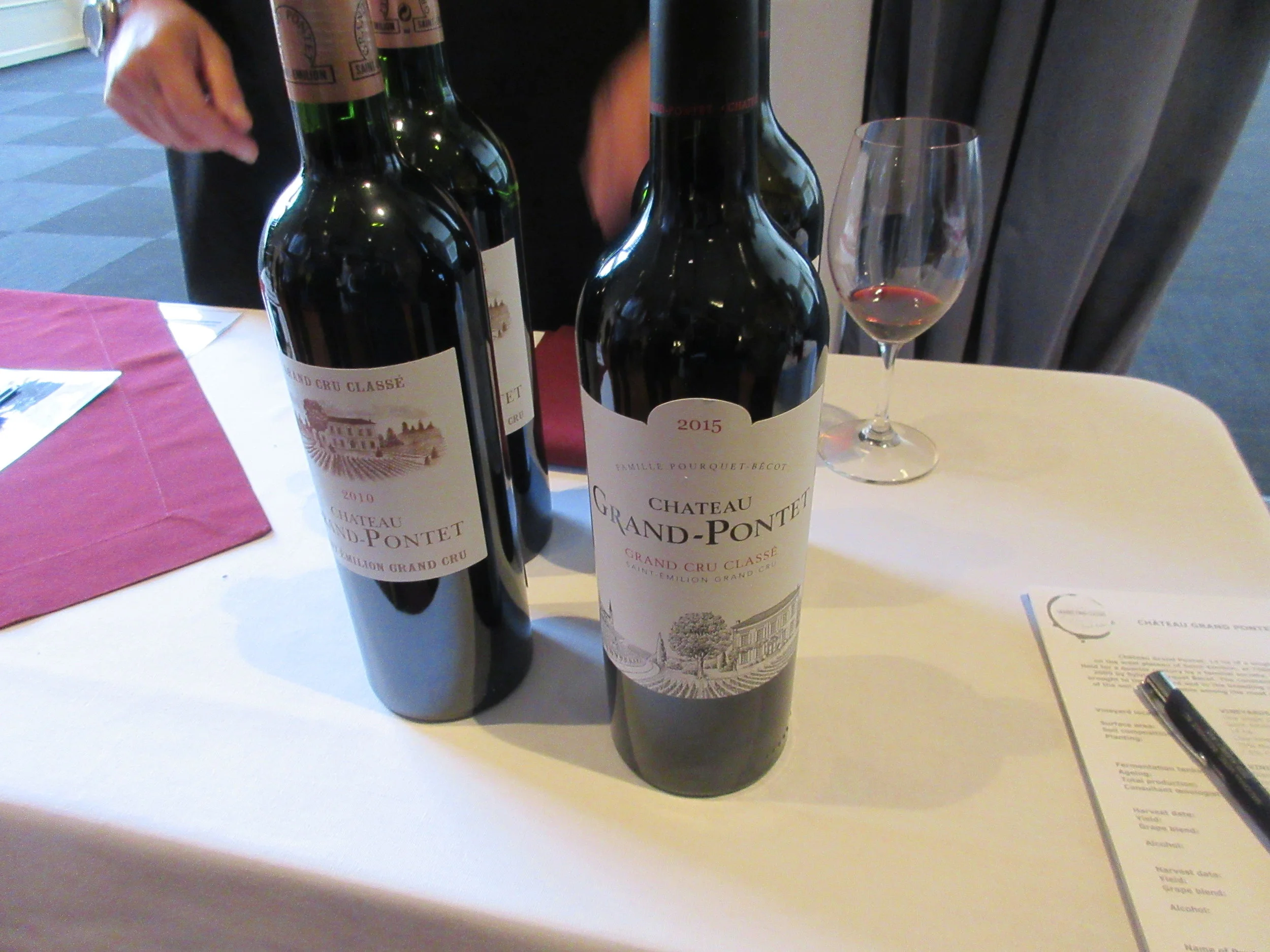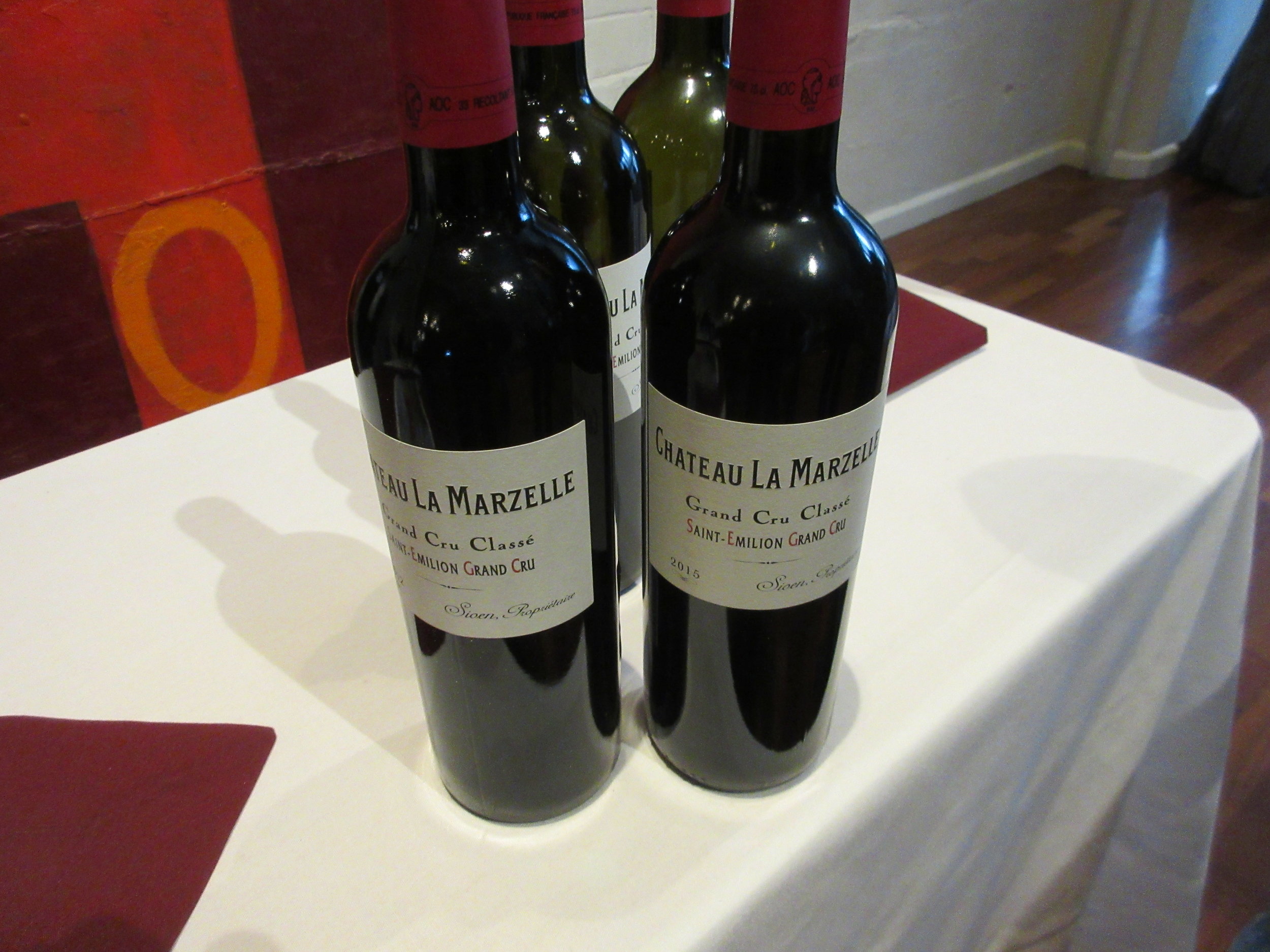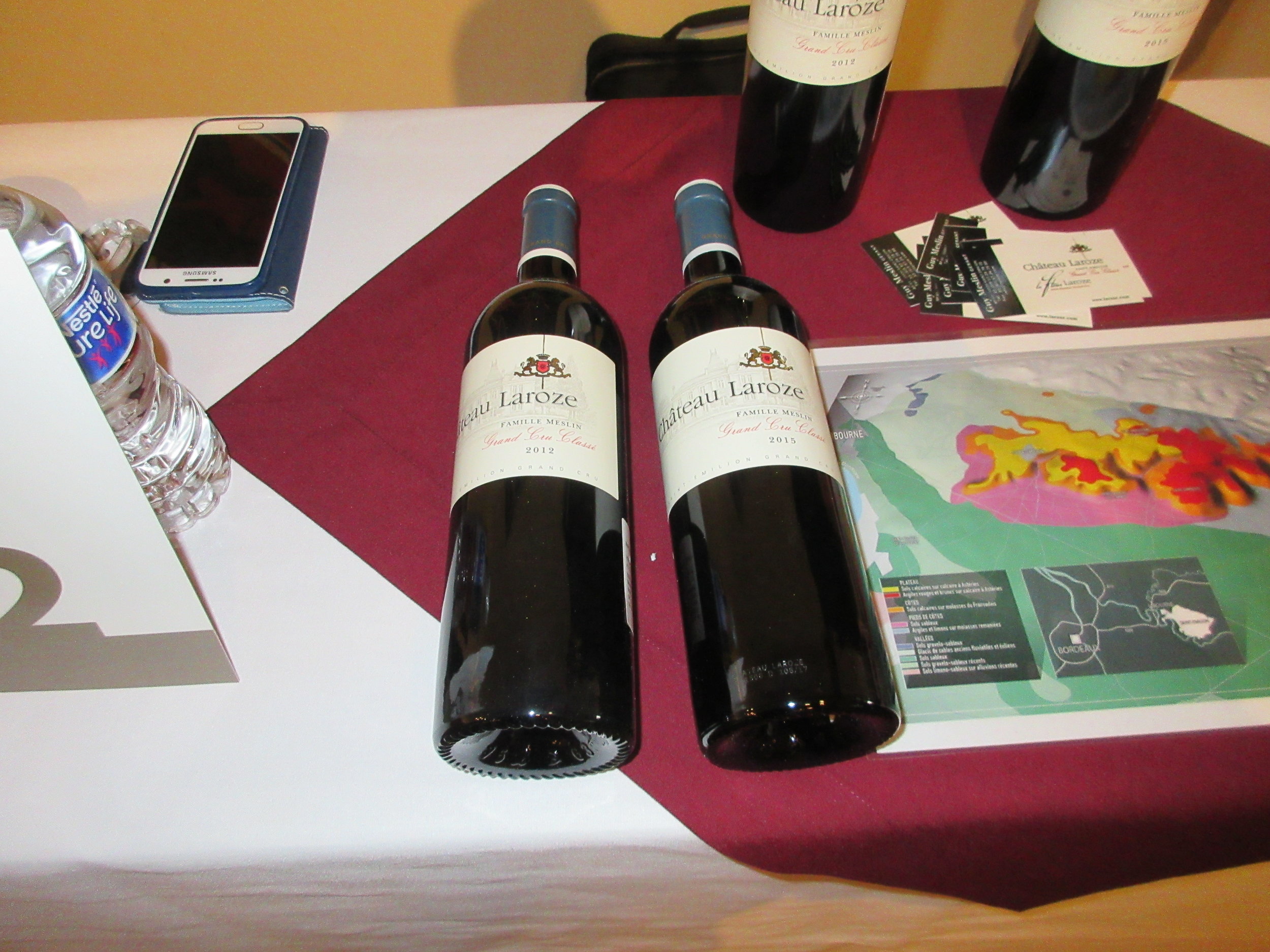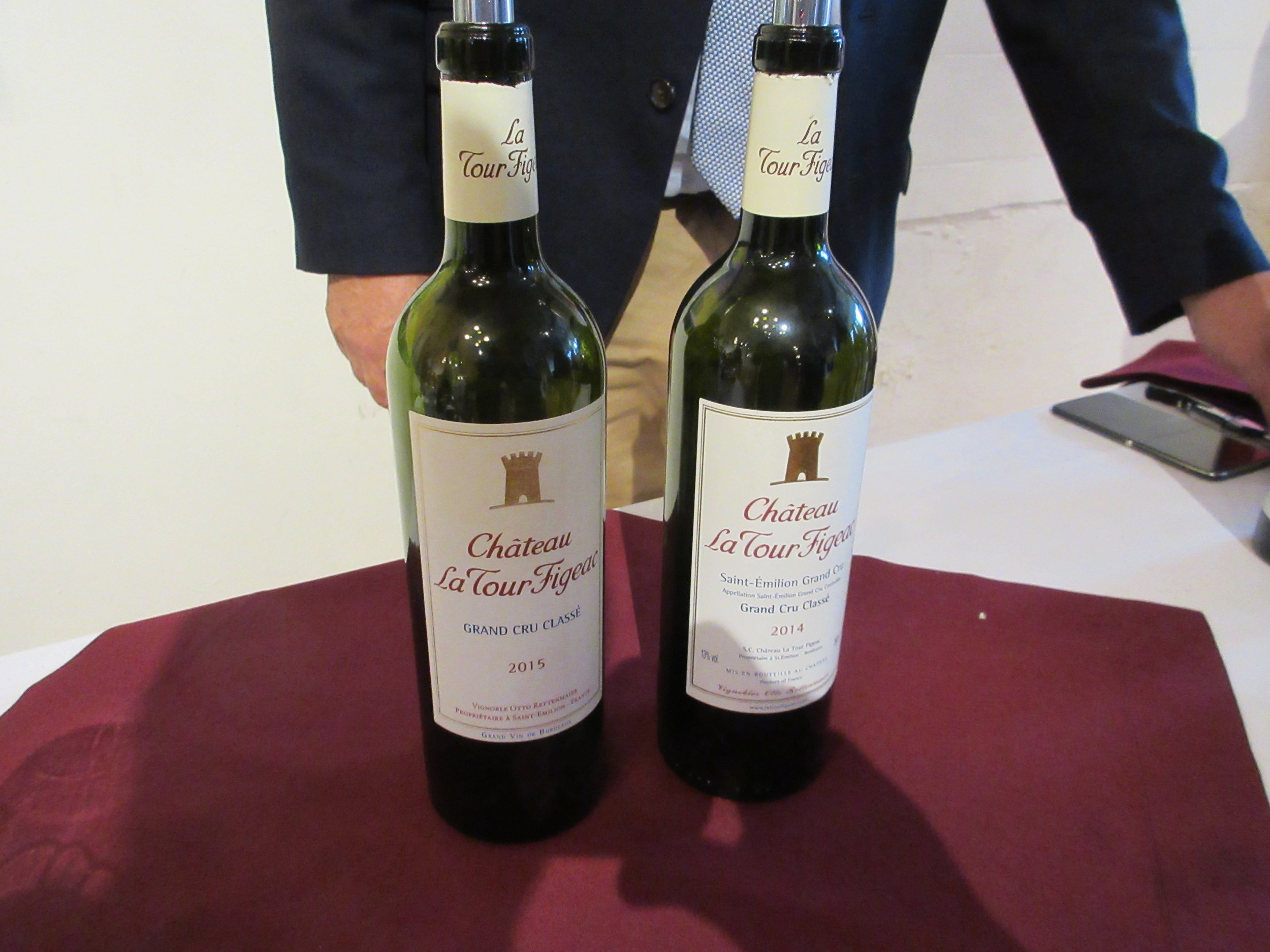Grand Cru Classes of Saint-Emilion
/Monday November 13th marked the showing of the 2015 vintage of Grand Cru Classé wines of Saint-Emilion at San Francisco's Terra Gallery. The 2015 vintage was a banner year in Saint-Emilion as it was for many of the wine growing regions in Europe.
The town of Saint-Emilion is about 25 miles northeast of the city of Bordeaux, the epicenter of the Bordeaux wine region in southwest France, its climate moderated by its close proximity to the Atlantic Ocean. Just about any wine book you pick up to learn about wine will start with the vaunted history of French wines and then launch into explaining the Bordeaux region with all its ranking and classifications. Don't let that discourage you. All it really takes to learn about Bordeaux wines is a little reading and a lot of tasting. Within the Bordeaux region there are some fifty-seven wine regions and one could easily argue that Saint-Emilion is one of the most noteworthy red wine regions in all of France.
Guy Meslin of Chateau Laroze
The wine estates north of Bordeaux are considerably larger than the wine estates in the Saint-Emilion region, so the first thing you should know about the latter is that the wines have less availability and are pricy. The second thing you should know and this is the scary part for those that have the herd mentality, is that Saint-Emilion wines are predominantly Merlot, with Cabernet Franc taking a minor role and Cabernet Sauvignon an even lesser role. So if you are still running with the crowd that thinks Merlot is so out, you're missing out on some wonderful wines. The French have had hundreds of years to figure out what grapes grows best on what soils and Merlot is king on the right bank terrain. The Bordeaux region is split in half by the Gironde River and its tributaries and as the river flows north-west to the Atlantic the regions on the southwest side are called left bank wines and those on the northeast side are called right bank wines.
The wines of Saint-Emilion are classed in four tiers and the classification is reviewed and updated every ten years. The last classification was in September 2012. The Association de Grands Cru Classés de Saint-Emilion was formed in 1982 to promote the wines of Cru Classé growers and improve quality among their Chateaux. The top three tiers Premiers Grands Crus Classés A, Premiers Grand Crus Classés B and Grand Crus Classés are where most of the quality wines are to be found. There are a total of 81 chateaux in these three tiers. The important sounding and misleading fourth tier St-Émilion Grand Cru includes hundreds of chateaux located on the lesser terroir of the Saint-Emilion area. A caveat here; a properties ranking is not a guarantee of quality and there are some that should have a higher ranking and others that are clearly underperforming at their current ranking.
The Terra Gallery located in the SOMA district on Rincon Hill in San Francisco was a wonderful spot for the tasting. A spacious venue offering plenty of natural lighting, lots of fresh water, with spittoons on designated tables in the center of the room and the purveyors, 23 in all arranged in a large u-shape. Having the spittoons in a different area from where the wines are being poured is an idea that more wine exhibitors should consider using. It serves two purposes, no unsightly expectorating at the presenters table, and once you've received a pour and taken a sip you have to move away from the table to go to the spitting area, freeing up the table for another taster. There were a lot of different types of artisan breads available for cleansing the palate and a good variety of mildly flavored cheeses if one started feeling a bit peckish.
Cyrille Grégoire of Chateau Ripeau
Each chateau poured a wine from a previous vintage with the exception of Chateau Ripeau, which showed their inaugural 2015 vintage. Showing a deep purple color, a gorgeous black fruit and licorice nose, medium to full bodied on the palate, with a lush juicy texture and good length on the finish, I was very impressed with the owner Cyrille Grégoire's premier effort and deemed it one of the top wines at the tasting. Of recent the Grégoire family story has been one of tragedy and optimistic rebirth. The new blacksmith logo on their label serves as a symbol of the families enduring character. Unfortunately for us estimated production is only around 1,500 cases.
Comparing and contrasting the different vintages side by side was very enlightening. A rising tide lifts all boats and the majority of the 2015 wines I tasted displayed beautiful deep purple color, lush fruit, silky textures, great freshness, with good power and concentration. Close to half of the producers elected to show their 2014 wines alongside the 2015's. In my opinion this strategy backfired with most of the 2014's coming off as tight on the nose and thin on the palate with light persistence. The 2015 vintage is miles ahead of 2014 when it comes to quality and I suggest that you taste the 2014's before you plunk down your hard earned cash. Mind you Bordeaux can be tricky. Recently I've had several 2007 Bordeaux, a poor vintage by most accounts, that have showed surprisingly well.
At the tasting I found the 2012's to be well developed and drinking well. Regarding the 2010's, I wish I had bought more when they were initially released. Sometimes the hype is right. If remembering vintages isn't your thing here's a quick trick for buying Bordeaux. Any year divisible by five since 1985 strengthens your chances of picking a good bottle.
The tasting gave me an opportunity to taste wines that have less distribution on the west coast because of their low production numbers. Although it could have easily been done, I did not try all the wines that were available. It was too easy to get side tracked talking with the property owners. If a property's wine that was shown is not on this list, it most likely infers that I didn't get an opportunity to try it.
Some of the 2015 wines are already available and more will be making their way to the marketplace this winter as we're already starting to see pre-arrival offers being sent out. In general the prices range from $30 to $50 a bottle. The 2015 vintage will be hyped and the buying window will be narrow, so start making your purchases early to ensure you get your favorite wines. Here's a quick list of my favorites listed below in two categories and in alphabetical order.
Outstanding
Chateau Bellefont-Belcier 2015 68%Merlot, 20% Cabernet Franc, 12% Cabernet Sauvignon $40 - $50
Chateau Couvent Des Jacobins 2015 85%Merlot, 11% Cabernet Franc, 4% Petit Verdot $40 - $55
Chateau Dassault 2015 75% Merlot, 25% Cabernet Franc, 5% Cabernet Sauvignon $40 - $45
Chateau Fonplegade 2015 95% Merlot, 5% Cabernet Franc $38 - $48
Chateau Grand Pontet 2015 88% Merlot, 8% Cabernet Franc, 4% Cabernet Sauvignon $30
Chateau Grand Pontet 2010 70% Merlot, 15% Cabernet Franc, 15% Cabernet Sauvignon $45
Chateau La Marzelle 2015 80% Merlot, 13% Cabernet Franc, 7% Cabernet Sauvignon $40
Chateau LaTour Figeac 2015 70% Merlot, 30% Cabernet Franc $40 - $45
Chateau Laroze 2012 62% Merlot, 30% Cabernet Franc, 6% Cabernet Sauvignon $32
Chateau Ripeau 2015 90% Merlot, 10% Cabernet Franc not available
Very good
Chateau Bellefont-Belcier 201 76% Merlot, 17% Cabernet Franc, 7% Cabernet Sauvignon $55 - $60
Chateau Couvent Des Jacobins 2010 85% Merlot, 15% Cabernet Franc $50
Chateau De Pressac 2015 72% Merlot, 16%Cabernet Franc, 9% Cabernet Sauv, 2% Carmenère, $30
Chateau Fombrauge 2015 91% Merlot, 7% Cabernet Franc, 1% Cabernet Sauvignon, 1% Malbec $25 -$35
Chateau Fonplegade 2014 95%Merlot, 5% Cabernet Franc $40
Chateau Fonroque 2015 85% Merlot, 15% Cabernet Franc $30
Chateau Franc Mayne 2015 90% Merlot, 10% Cabernet Franc $30- $33
Chateau Franc Mayne 2012 90% Merlot, 10% Cabernet Franc not available
Chateau Grand Corbin 2015 77%Merlot, 18% Cabernet Franc, 5% Cabernet Sauvignon $32 - $40
Chateau Jean Faure 2014 50% Cabernet Franc, 45% Merlot, 5% Malbec not available
Chateau Laroze 2015 62% Merlot, 30% Cabernet Franc, 8% Cabernet Sauvignon $33
Chateau Le Prieure 2015 80% Merlot, 20% Cabernet Franc $40
Chateau Yon Figeac 2015 82% Merlot, 12% Cabernet Franc, 6% Petit Verdot $30
Chateau Couvent Des Jacobins 2010 85% Merlot, 15% Cabernet Franc $50
Chateau De Pressac 2015 72% Merlot, 16%Cabernet Franc, 9% Cabernet Sauv, 2% Carmenère, $30
Chateau Fombrauge 2015 91% Merlot, 7% Cabernet Franc, 1% Cabernet Sauvignon, 1% Malbec $25 -$35
Chateau Fonplegade 2014 95%Merlot, 5% Cabernet Franc $40
Chateau Fonroque 2015 85% Merlot, 15% Cabernet Franc $30
Chateau Franc Mayne 2015 90% Merlot, 10% Cabernet Franc $30- $33
Chateau Franc Mayne 2012 90% Merlot, 10% Cabernet Franc not available
Chateau Grand Corbin 2015 77%Merlot, 18% Cabernet Franc, 5% Cabernet Sauvignon $32 - $40
Chateau Jean Faure 2014 50% Cabernet Franc, 45% Merlot, 5% Malbec not available
Chateau Laroze 2015 62% Merlot, 30% Cabernet Franc, 8% Cabernet Sauvignon $33
Chateau Le Prieure 2015 80% Merlot, 20% Cabernet Franc $40
Chateau Yon Figeac 2015 82% Merlot, 12% Cabernet Franc, 6% Petit Verdot $30
As always, enjoy!







